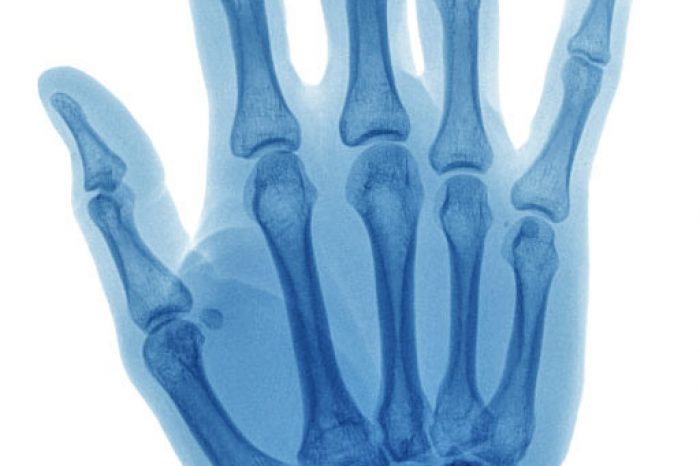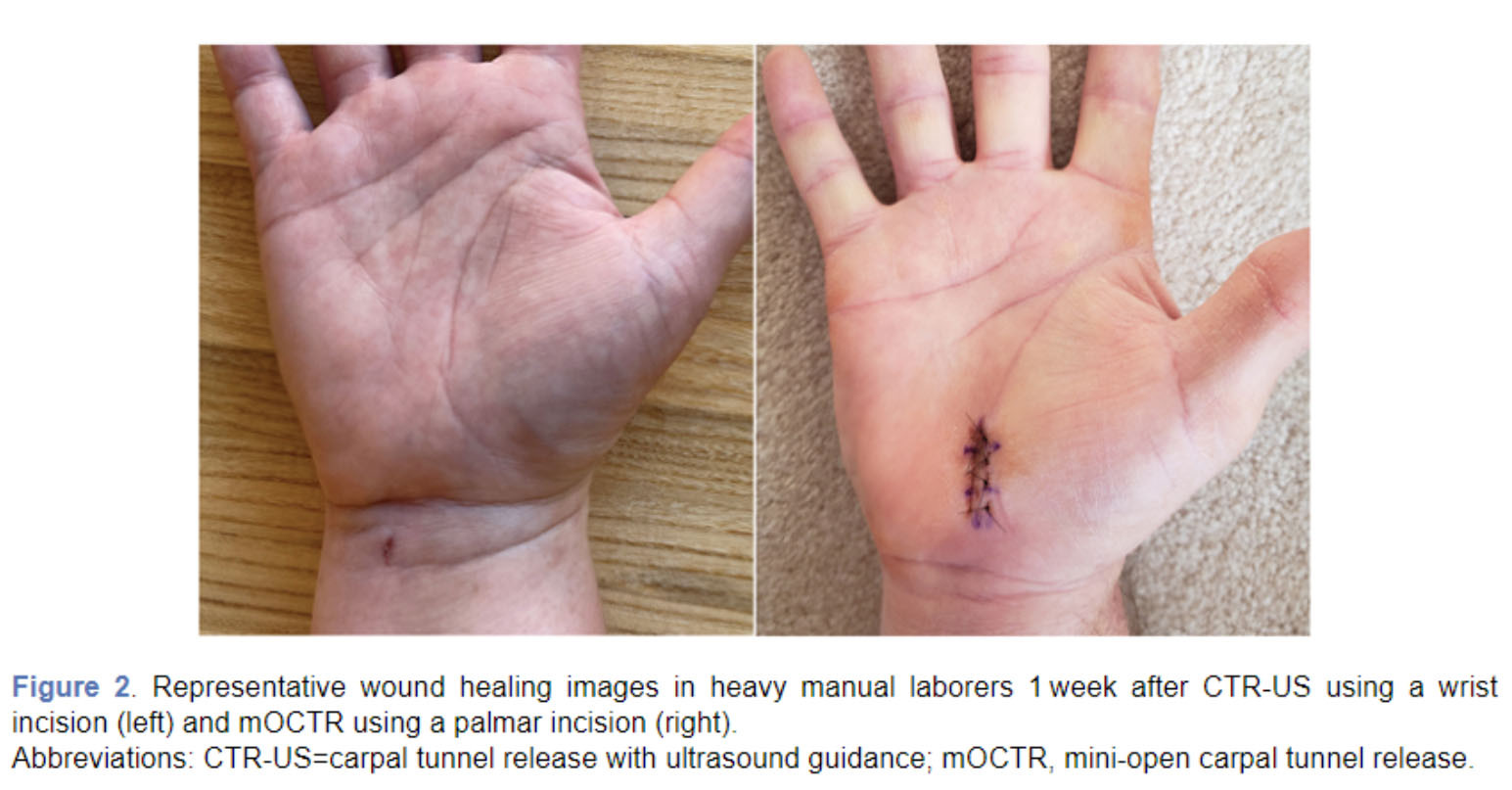

Carpal tunnel syndrome is the most common peripheral entrapment, and clinical symptoms consist of numbness, paresthesia, pain and weakness (Atroshi et al, 1999). Traditional carpal tunnel syndrome is performed using an open, endoscopic and mini-open approach. A percutaneous approach using ultrasound guidance (USG) was first described in 2005 by Rowe et al. in a cadaveric study. This approach relies on using an ultrasound probe to visualize the at-risk structures, including the median nerve and adjacent arteries.
In a recent ground breaking study, titled “Multicenter Randomized Trial of Carpal Tunnel Release with Ultrasound Guidance versus Mini-Open Technique,” orthopedic hand surgeon Dr. Kyle Eberlin (Program Director, Harvard Plastic Surgery Residency Program, and Associate Program Director, MGH Hand Surgery Fellowship) found that Ultrasound Guided Carpal Tunnel Release (USG-CTR) performed equally to the mini-open surgical carpal tunnel release, despite the USG-CTR being performed by hand surgeons who had less experience with the USG technique. The authors found no statistical differences in return to daily activity (2 days), return to work (3-4 days) between the groups. However, they did find that USG-CTR group reported freedom from pain and wound sensitivity in 61% of patients, compared to only 18% of mini-open CTR patients.

1. Atroshi I, Gummesson C, Johnsson R, Ornstein E, Ranstam JRI. Prevalence of carpal tunnel syndrome in a general population. JAMA. 1999;282(2):153-158.
2. Rowe NM, Michaels VJ, Soltanian H, et al. Sonographically guided percutaneous carpal tunnel release: an anatomic and cadaveric study. Ann Plast Surg. 2005;55(1):52-56.
3. Eberlin KR, Amis BP, Berkbigler TP, Dy CJ, Fischer MD, Gluck JL, Kaplan FT, McDonald TJ, Miller LE, Palmer A, Perry PE. Multicenter randomized trial of carpal tunnel release with ultrasound guidance versus mini-open technique. Expert Review of Medical Devices. 2023.
Adductor longus selective tenotomy is a modern surgical treatment for chronic groin pain that offers faster recovery and better outcomes than traditional full release surgery. The adductor longus, an inner thigh
Read MoreDiscover how ultrasound helps diagnose plantar fat pad atrophy, a leading cause of ball-of-foot pain. Learn about symptoms, thickness cutoffs, and why early detection matters for relief.
Read More